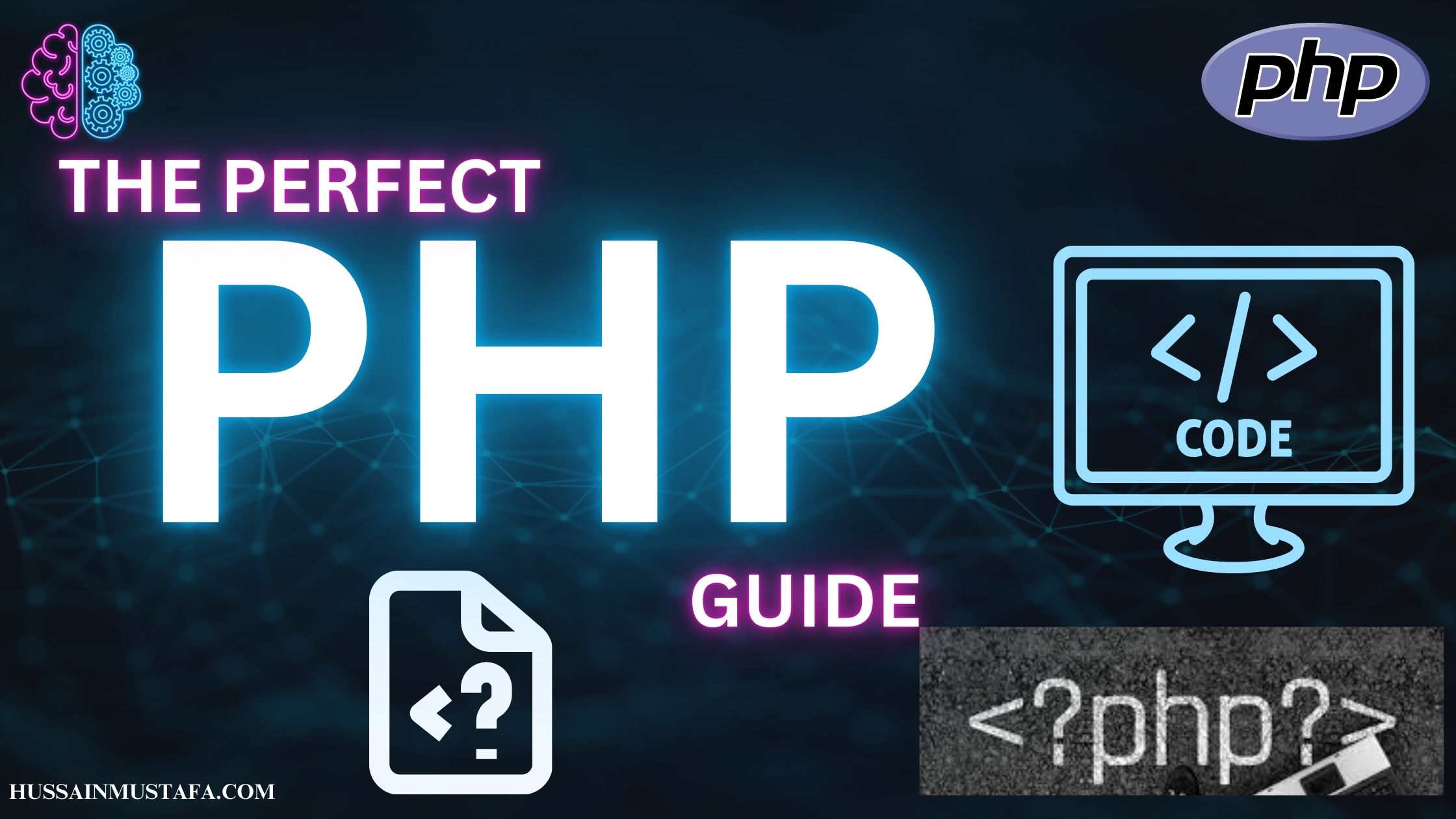There is no shortage of websites that use the PHP programming language in some capacity, from Facebook to Yahoo and even WordPress.
The PHP programming language is one of the most widely used computer languages worldwide. PHP is the fifth most popular programming language on Google, according to the PYPL Popularity of Programming Language Index. With that in mind, it’s easy to see how popular the PHP programming language is on the internet.
PHP is here to stay, thanks to rising demand from some of the world’s most powerful software companies.
“How do I learn to code in PHP?” you might be wondering. That is an excellent question! You don’t have to be concerned if the prospect of learning to code makes you feel overwhelmed. After all, everyone has to start somewhere.
We’ll go over a few key pointers in this article to assist you learn to code in PHP. We’ll make sure you get off to a good start on your journey.
What Is PHP?
PHP is a server-side scripting language that may be used to create full-featured web applications.
The following is a quick summary of PHP:
- PHP is an acronym for “Hypertext Processor”
- It’s an open-source scripting language that’s frequently utilized in small and large industrial applications.
- PHP scripts are directly run on the server.
- Its compilers and extensions can be downloaded and used for free.
PHP works in the back end of a website because it is a server-side technology. This is the part of a website that no one sees. This means that PHP is frequently used to run server-side scripts, such as data collection and processing and database management.
PHP is capable of performing the following tasks with ease:
- Creating dynamic page content that can be changed quickly
- On the server, creating, opening, reading, writing, and closing files
- The ability to collect data from forms (which is a very common application, by the way!)
- Cookies being sent and received.
- Used for controlling user access
- Encrypting sensitive user data
These are just a few of the many jobs that PHP can help you with. When you consider this list, it’s easy to see why so many individuals are interested in understanding the technology.
Why Should You Learn PHP?
PHP is a simple and straightforward programming language. PHP is still frequently utilized in the web development sector, even in an age of frightening, large-scaled tech stacks. It is almost universally used on the internet. PHP is predicted to be used by 79.1% of all websites that employ a recognized server-side programming language.
The fact that PHP is a simple language is one of the key reasons why learning it is a wise investment. PHP was created with the goal of speeding up web development, therefore it features a basic syntax that is ideal for beginners. Furthermore, because PHP is a dynamically typed language, there are less restrictions to follow while creating features.
PHP is incredibly adaptable and versatile, which is a nice advantage. PHP is almost identical to an object-oriented programming language, making it a highly convenient language to use. It also has a robust meta-language for programmers.
Because PHP is so widely used, the programming language has a sizeable development community. For you, this means that there are several resources available to assist you in learning to code. This also means that there would be no scarcity of organisations eager to hire PHP experts.
PHP is commonly used to power websites, but it may also be utilized on Windows, Mac OS X, and Linux desktops. Installing Docker and then running a container with PHP included is the simplest approach to run PHP. PHP, MySQL, and NGINX are all executing in a single container in the container linked to in the link. In only a few hours, you’ll be up and running.
Is PHP Hard to Learn?
PHP is one of the more straightforward programming languages. This is because PHP provides a robust ecosystem of resources for newcomers, as well as a syntax that is user-friendly.
Always keep in mind that a programming language is only a tool that should do the job and grow with your requirements. PHP is capable of doing so, and it does it well.
Your ability to learn PHP will be determined by your previous programming knowledge.
You should find it easier to learn PHP if you’ve already studied another web development technology. If you have no prior programming knowledge, however, learning PHP may be more difficult.
How Long Does it Take to Learn PHP?
Learning PHP takes three to six months, depending on how much effort you devote. PHP has a friendly syntax, making it an excellent place to start for anyone interested in learning back-end web development.
There are a plethora of online resources available to assist you learn PHP. For starters, you can use the internet to find free courses and a PHP manual to assist you in learning this programming language. Comprehensive PHP courses are also available through university programs.
In addition to simple tutorials, online forums can provide a wealth of information on PHP. Because the programming community is so active, it’s probable that if you have a question, someone online will be able to answer it. If you decide to seek assistance from an online community, it’s a good idea to double-check the information you’re receiving.
Finally, there are various print publications available to assist you in learning PHP and using it. Texts on specialized applications of PHP, such as site design and security, are also available.
Here are some helpful links to get you started:
- PHP for Absolute Beginners by Jason Lengstorf and Thomas Blom Hansen
- PHP Solutions: Dynamic Web Design Made Easy by David Powers
- PHP Cookbook: Solutions and Examples for PHP Programmers by Adam Trachtenberg and David Sklar
- Essential PHP Security by Chris Shiflett
- SimpliLearn: PHP Programming, Fundamentals, and Tutorials
- YouTube: Introduction to PHP Programming
- PHP Docs: PHP Manual
How to Learn PHP
So, you’d like to learn PHP quickly? Let’s have a look at some of the measures you can take to learn PHP coding.
Step 1: Learn HTML and CSS
Step 2: Master the Basics
You’ll be ready to start working with PHP once you’ve studied HTML and CSS. Mastering the fundamentals is the first step in learning PHP. This will provide you with a solid foundation of knowledge that you may build on later in your trip as you investigate more complex topics.
To assist you in getting started, we’ve put together a list of the important things you should look into to learn PHP:
- Syntax & Variables
- Functions
- Conditionals and Loops
- Arrays
- Working with Forms
- Object-Oriented Programming
Step 3: Build a Project
PHP can be used to develop a variety of web applications, including:
Web Pages and Web-Based Applications
A web page or web application must be highly customizable, have a highly dynamic user interface, and be able to conduct online transactions and link with database systems. PHP’s three-tiered architecture, which works in a linear method on browser, server, and database systems, ensures that all of these functionalities are achieved. This explains why PHP is used for server-side programming on more than 82 percent of websites. PHP is also used to write a large number of web-based applications including Facebook apps.
PHP is a scripting language that may be used to create both static and dynamic web pages as well as web-based applications. Developers can also change the code so that it can be reused in other apps. PHP is one of the most popular programming languages due to built-in features such as user authentication, SQL query builder, CSRF security, and routing. PHP is one of the most popular programming languages, not only because it is an open-source platform with free licensing, but also because it is an open-source platform.
Web Content Management Systems
PHP is built to interface with other services via protocols such as HTTP, LDAP, POP3, IMAP, NNTP, SNM, and COM. It also supports multiple databases such as Oracle, MySQL, and MS Access. Many PHP frameworks include templates and utilities that allow developers to manage and change website content. As a result, PHP is utilized to build both small static webpages and massive content-based websites. WordPress and its plugins, Drupal’s user interface, Joomla, Facebook, MediaWiki, Silverstripe, and Digg, among others, are some of the greatest Web Content Management Systems (CMS) controlled by PHP.
Ecommerce Applications
Online selling is an essential component of any business nowadays, no matter how big or little it is. The use of PHP frameworks such as CakePHP and CodeIgniter speeds up the development of ecommerce apps. PHP is used in popular ecommerce platforms such as Magento, OpenCart, Zen Cart, PrestaShop, AgoraCart, and Ubercart.
Image Processing and Graphic Design
The use of PHP to edit photos is another popular application. Various image processing libraries, such as Imagine, GD library, and ImageMagick, can be integrated with PHP applications to provide a wide range of image processing capabilities, such as rotating, cropping, resizing, adding watermarks, creating thumbnail images, and generating output images in a variety of formats. Jpeg, gif, wbmp, xpm, and png are some of the picture output formats. This is a requirement for building reliable websites and web apps.
Data Representation
Using tools like Image Graph, PHP can build a variety of data visualizations such as charts, graphs, and scatter-dot plots. Client-side ecommerce websites, desktop programs, and other applications where data must be displayed succinctly and graphically typically employ this capability.
Creating PDF Files
Another notable PHP use is the creation of PDF files. PHP comes with a built-in library utility called PDFLib that can be used to create and manipulate PDF files. This aids in the creation of an online invoicing system in which an HTML-driven invoice in PDF (Portable Document Format) format can be created.
PHP’s ability to be incorporated in HTML makes it very approachable to inexperienced programmers. PHP does not require sophisticated processes to build HTML pages, unlike languages like C or Java. As a result, PHP has a wide range of applications, ranging from basic websites to extremely complicated systems such as virtual marketplaces and online management platforms.
How to Build a Career in PHP
A career in PHP might be right for you if you enjoy coding and have a strong interest in website development. A PHP Developer is a software developer who works with the PHP language to design, test, and develop websites, applications, and programs. The demand for PHP developers is growing in tandem with the growth of the PHP market.
Year after year, PHP has propelled the need for programming languages. PHP is now one of the top five most popular programming languages. PHP’s popularity is due to a variety of factors. Nonetheless, Microsoft and Apple’s strong support for PHP in integrated development environments (IDEs) like Visual Studio and Xcode is crucial. Now, along with C# and Swift, enterprise-ready IDEs provide strong support for PHP.
For admission into the field of PHP development, a bachelor’s degree in computer science, software engineering, or programming is preferred. Let’s look at some of the talents needed to work as a PHP developer:
- Knowledge of PHP, even if it is at the beginner’s level
- Knowledge of Ajax, jQuery, and MySQL
- Proficiency in JavaScript, CSS, and HTML
- Understanding of the open-source web framework – CakePHP and the unit testing framework – PHPUnit
- Photoshop or similar design tool
- Knowledge of Unix/Linux, APIs, and MVC Framework Architecture
- Good Communication Skills
- Problem Solving Abilities
- Knack for Critical Thinking
The PHP Developer job is a well-paid employment with plenty of prospects for advancement. A PHP developer in the United States gets an average pay of $74,126 per year, according to Glassdoor, while a PHP developer in Europe earns an average salary of $76000 per year, according to Payscale.
Conclusion
PHP is a very powerful and adaptable programming language that runs millions of websites on the internet. Once you’ve mastered PHP, you can construct dynamic and sophisticated online apps.
If you have any questions or comments, please leave them in the comments section below; you will receive a response!
Thank you for taking the time to read this, and I hope you learnt a lot!
If you loved this lesson, please share it on Facebook, Twitter, LinkedIn, or any other social media platform! It aids our development and allows more people to benefit from it!













Leave a Reply